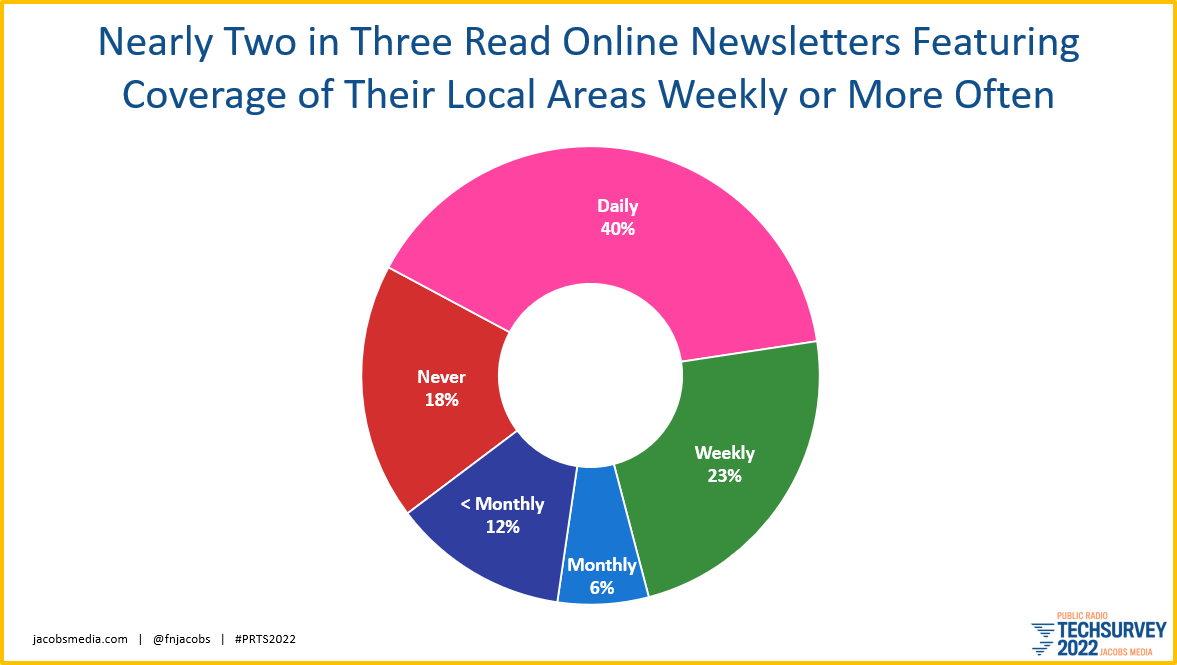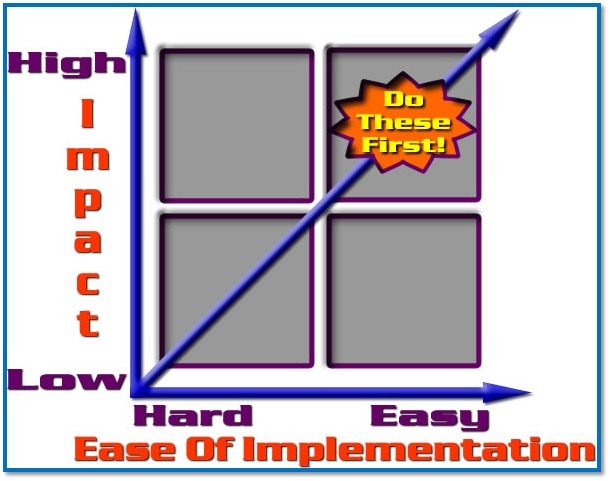
In the digital smörgåsbord facing traditional radio brands and their parent companies, choices about where to place resources have become precarious. Just because we can make a piece of content doesn’t mean it’s going to hit home with the audience or pay for itself.
There are decisions to be made – many of them – and they aren’t getting easier over time, especially as assets – staff and money – dwindle.
Do we produce podcasts?
Do we create streams of other music and/or talk channels?
Do we produce videos and set up our own YouTube channel?
Do we develop event marketing opportunities (not necessarily layered in digital), but another option for broadcasters?
Do we devise a game platform – like Wordle?
Or do we build something altogether different?
The new/old adage – “Meet the audience where they are” – comes into play here. It’s one thing for a radio station to take a stab at creating competitive content in a foreign space. It’s another to be able to pay the price in financial and human resources in order for strong content to be designed, built, sold, and marketed.
 The end result? There’s been much frustration revolving around radio’s efforts to craft and execute a digital strategy that is sustainable and profiitable. Sadly, the opposite has been true. Too many broadcasters have grown frustrated with their digital efforts, while others have incurred painful losses.
The end result? There’s been much frustration revolving around radio’s efforts to craft and execute a digital strategy that is sustainable and profiitable. Sadly, the opposite has been true. Too many broadcasters have grown frustrated with their digital efforts, while others have incurred painful losses.
Many radio organizations talk a good digital game about aligning with their audience but generally struggle when attempting to actually pulling it off. Rather than strategically assess where their listeners hang out in the digital world as well as the gadgets they favor, they tend toward content creation they find interesting, whether it’s a social platform or a podcast. And then they wonder why these efforts fail to attract an audience large and robust enough to monetize.
That’s why a recent case study published in Media Makers Meet grabbed my attention. Its focus is on BuzzFeed, the digital publisher famous for its quizzes, “listicles,” and pop culture coverage.
It’s been around since 2006, and started its own award-winning news service when Politico’s Ben Smith was brought on board five years later. Soon after, BuzzFeed had a team of 20 investigative journalists.
And by April of this year, it was over. BuzzFeed closed its news division along with other social media organizations because of the tough competitive road in the space. While the Internet has wrought exponential choices for news, the glut of organizations covering our world, from Israel to Taylor Swift has made it even difficult for even companies like BuzzFeed to compete.
Many radio companies are experiencing similar digital growing pains. It is never easy choosing the best avenues for innovation. That’s something we can’t help but notice at CES every year. There is technology that wins awards from the Consumer Technology Association, and then there’s what ends up in Jacobs Media’s “Dumbest in Show” collection we present in our post-CES webinars.
 In fact this year, we’re told at CES 2024 there will actually be an exhibit in North Hall aptly called “The Gallery of Flops,” designed to celebrate corporate futility in the digital space.
In fact this year, we’re told at CES 2024 there will actually be an exhibit in North Hall aptly called “The Gallery of Flops,” designed to celebrate corporate futility in the digital space.
Unbeknownst to me, this will mark the second year a company called Prelaunch.com will feature this expanded showcase of disasters, debacles, and epic fails.
On display are fiascos from some of the biggest names in tech, Apple and Samsung included. But there’s a method to this mediocrity.
The “Gallery of Flops” is a useful way for the Prelaunch team to show off its true purpose – to help inventors gain product insights before they make the mistake of investing massively in a product or service destined to flatline. It’s too bad they’re not sponsoring the NAB Show this spring.
Amidst all the failure has to be a pathway for success. And that’s why BuzzFeed’s new direction is noteworthy, not just for its simplicity but its profitability.
Their secret weapons?
Email database programs and email newsletters.
The story in Media Makers Meet pegs BuzzFeed as in the top 25 most visited media sites in the U.S., attracting over 90 million visitors each month.
And BuzzFeed’s newsletters play a major role in their web traffic success comprising one of their top five sources of referral, drawing as many website visits as Twitter and YouTube combined.
Here’s how they do it (and how any radio group or brand could follow suit):
1. Promote email subscriptions relentlessly – BuzzFeed does just that, consistently making email signups visible and omnipresent, always making it clear when one of their many newsletters exists. Web visitors “self-select,” picking the newsletter(s) that fit their interests and needs.

2. It’s about quantity – They don’t just have newsletters – they have a ton of them, respecting the fact BuzzFeed readers have many interests, tastes, and hobbies. In radio, we often make the mistake of thinking listeners are just interested in sports, Classic Rock, or Jazz, when in fact, they’re into all sorts of things.
In this way, the BuzzFeed team can segment its audience by their tastes, making it easy to reach them, market to them, and appeal to sponsors in their newsletter categories.
Their slogan – “There’s a newsletter for everyone!” underscores their commitment to this medium.

3. It’s also about quality – And sadly, this is an area where many radio operators have glossed over. In the digital marketplace, it is all about getting it right – early and often. There’s no appetite for consuming an inferior product – more than once.
This is subjective, of course, but BuzzFeed newsletters have dedicated landing pages, as well as offers for free courses, coupons, and trials. In other words, they give their readers something.
The key is in avoiding “unsubscribes,” and that’s where every newsletter publisher should focus.
4. A curated path to success – Media Makers Meet emphasizes the frictionless BuzzFeed newsletter model: high visibility, easy to subscribe to, lots to choose from, and a quality product that provides value. This sounds simple, but in the newsletter space, these building blocks are table stakes.
5. Digitize your audience – This is my addition because it’s so important to radio broadcasters. Too many digital activities provide no connection back to the user – web visits to read an article, listening to a podcast or a stream, etc. But with newsletters, you’re capturing that all-important email address – the gift that keeps on giving. For more information on what this looks like for radio, read this post: “What It Means To ‘Digitize Your Audience’ written earlier this year. If you’re making digital content, but you’re not collecting email addresses from your “users,” you may be missing the most important element in a successful digital program.
The process of picking and choosing the best digital avenues is not an easy one. Otherwise, you wouldn’t see the “big boys and girls” laying off hundreds of workers and shuttering entire divisions.
2023 has been an especially painful year for fails, helping expand the exhibit space for the “Gallery of Flops.”
But it doesn’t have to be. Any brand can do its homework, ensuring it is at least creating a product or service that will be welcomed, valued, and consumed.
In the case of newsletters, we know there’s an audience for this medium in public radio where we’ve can see the incredible volume of readership.

We’re about to find out how newsletters perform in commercial radio when Techsurvey 2024 launches early next month. Info and registration here.
A key, of course, is determining just how difficult and impactful your digital “killer app” or “folly” is. Many years ago, the late Tim Davis, our first digital guru, whipped out a chart in the middle of a frustrating meeting where we were experiencing “brain block,” made worse by having a few too many people in the room. In fact, thanks to the “Rules of Brainstorming,” we had more ideas than we could use. And we were having a tough time prioritizing them.
By plotting all our ideas on this chart, we were able to break through the haze and actually narrow our focus. Here it is, complete with Tim’s 2005 era graphics:

Tim reasoned that if, as a group, we could plot each idea on both its impact (high or low), and its degree of difficulty (hard or easy), we’d hopefully end up with a concept or two in the upper-right quadrant – high impact with (relatively) easy implementation.
We use the chart in strategic design sessions to this day. It’s not foolproof. It helps to have research to support a group’s “plotting.” But if you’re working with bright, qualified people, it’s often not hard to work your way to a viable plan.
One of the tough realities to accept in a Digital World is all the possibilities that are in front of us. Making the best choices is rarely a matter of luck, but often a result of skill, experience, focus, and being honest with the people you work for.
The last one? Essential.
By the way, you’ll be pleased to note that anyone can screw up. No one is immune to screw-ups, failures, disasters, or fender-benders.
Take Prelaunch.com, for example, the company that helps ensure success by making sure they keep their clients ouf of sand traps.
Yes, they’re the one who creataed the Gallery of Flops, discussed earlier in this post. Earlier this week, we received an email from them, announcing they’ll be in Las Vegas in January. Unfortunately, their email mislinked their own website in their CES 2024 email blast,  proving there’s a little Homer Simpson in all of us.
proving there’s a little Homer Simpson in all of us.
DOH!
- What To Do If Your Radio Station Goes Through A Midlife Crisis - April 25, 2025
- A 2020 Lesson?It Could All Be Gone In A Flash - April 24, 2025
- How AI Can Give Radio Personalities More…PERSONALITY - April 23, 2025




Digital is superb delivery and enhances content. Just like HD and Color TV. Broadcasting has provided outstanding content for years, no matter how it was and is now received. Telegraph and pony express originally delivered essential messaging. Podcasting is not BROADCASTING. The investment in content and cash must be re-directed the real source of information: Licensed Broadcasting. It’s nice that podcasting has involved so many new participants but how much of the audience does it reach and at what cost to the Real Deal: Radio? Thank you, Fred.
Well, after swearing I’d never go back to Las Vegas for CES….too much walking, but I’m a gluten for punishment and will try one more time. I wish I could go on your fantastic tour, but as “an old guy,” on a very fixed income, it’s outta my price range. However, I’m looking forward to the Gallery of Flops. Will I see my first Sony Betamax? Perhaps the mini-disc player? Will my AM Stereo radio be there? How about my Pioneer Laser Disc player? Maybe my mini-DV video recorder, and we can’t forget those highly taunted 8mm tape machines. Sadly, should I include my numerous AM radios? Fred, I really think that my house is my own personal Gallery of Flops! I’ll wave to you and Paul as I trug through the West Hall in January.
Looking forward to seeing you in Vegas, Art. Let’s meet up aat the Gallery of Flops!
I wrote about the importance of a focused newsletter strategy for radio two years ago, comparing the intimacy of radio with the intimacy of the inbox.
I’m glad that you’re stressing the importance of this for stations. It’s not exactly low-hanging fruit, but it’s the kind of lift that most stations can take on to serve their audience.
https://timjeby.substack.com/p/three-things-for-october-28-2021
Thanks for this, Tim. It’s not about newsletters vs. podcasts vs. whatever. It’s fishing where the fish are, and content virtually any public radio station can create.